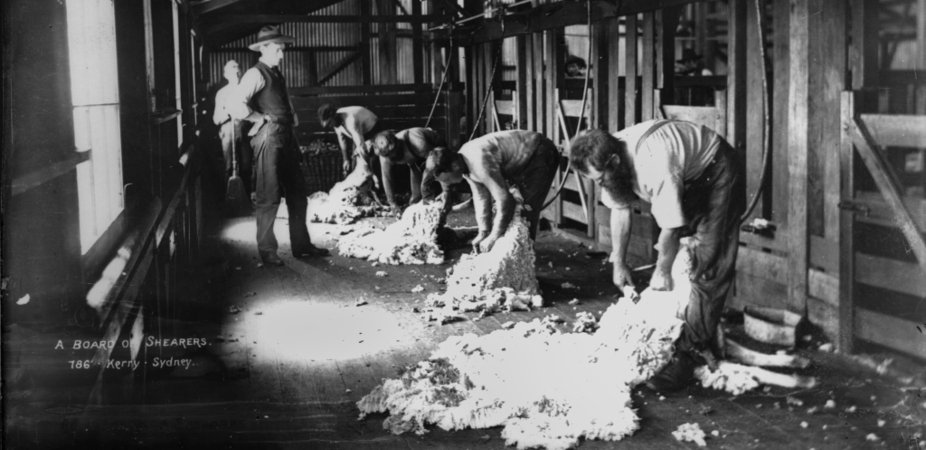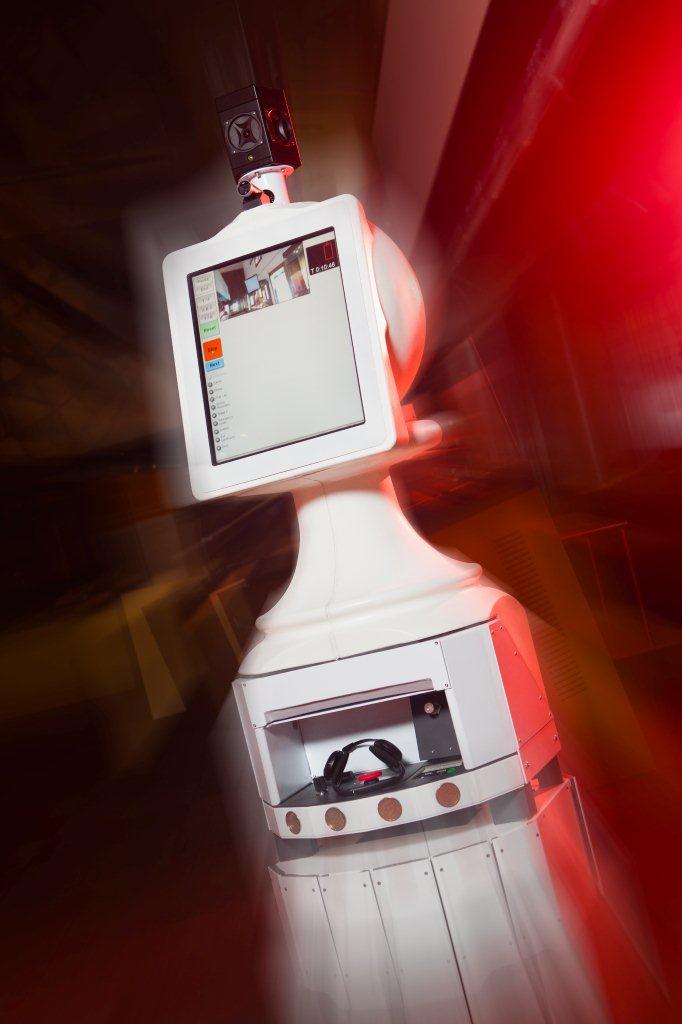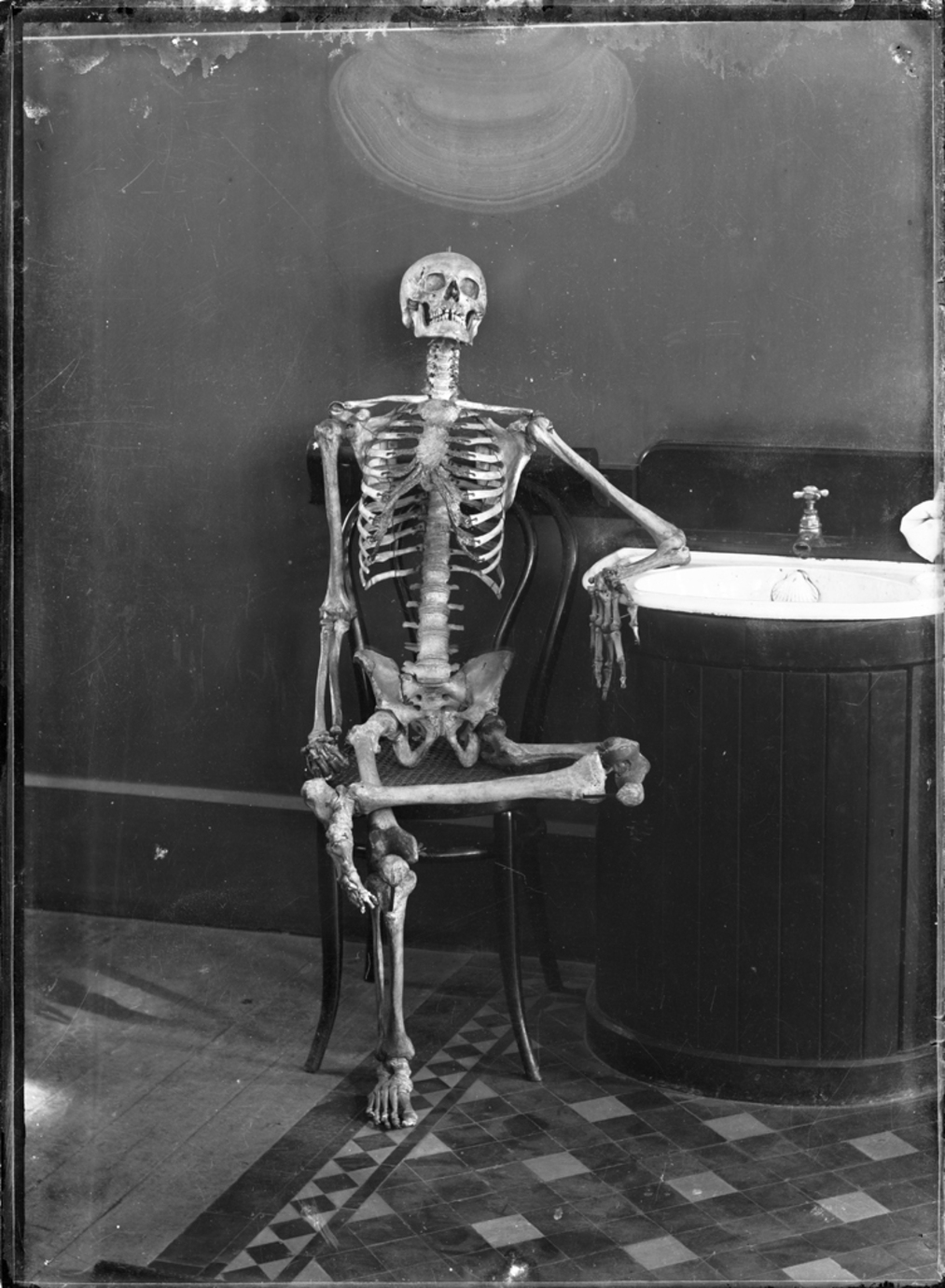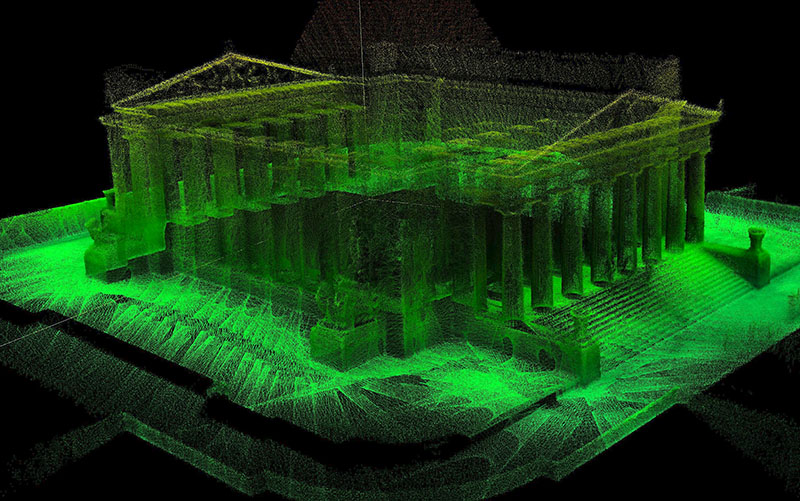
An image of Australian shearers taken on glass plate negative is now preserved in a digital collection. Powerhouse Museum Collection/Flickr
An image of Australian shearers taken on glass plate negative is now preserved in a digital collection. Powerhouse Museum Collection/Flickr
By Michael Brünig, CSIRO
Australian’s museums, galleries and other cultural institutions must adopt more of a digital strategy with their collections if they are to remain relevant with audiences.
Only about a quarter of the collections held by the sector have been digitised so far and a study out today says more needs to be done to protect and preserve the material, and make it available to people online.
Challenges and Opportunities for Australia’s Galleries, Libraries, Archives and Museums is a joint study by CSIRO and the Smart Services CRC.
It notes that Australia’s galleries, libraries, archives and museums (the GLAM sector) represent our accumulated achievements and experiences, inspire creativity and provide a place for us to connect with our heritage.
They are also crucial to our economy with the GLAM sector estimated to have a revenue of about A$2.5 billion each year. That’s not only a lot of paintings and artifacts, but a lot of jobs as well.
But despite its size and scope, we found that digital innovation in the sector has been inconsistent and isolated. If these cultural institutions don’t increase their use of digital technologies and services, they risk losing their relevance.
So what changes do they need to make in order to thrive in the digital economy?
Opening doors and minds
With Australia’s rapid uptake of online and mobile platforms, people are now choosing to access and share information in very different ways.
It’s safe to say that the only constant in this space is change. Research suggests that expectations for more personalised, better and faster services and more well-designed experiences will continue to increase.

Virtual tours are now possible at the National Museum of Australia.
This is why our cultural institutions need to review the kind of visitor experience they are providing. We found only a few organisations had made fundamental changes to their operations that would allow them to place digital services at their core, rather than as an add-on activity.
This is in contrast to the dramatic changes we’ve seen when it comes to adopting digital technologies in our daily lives.
In order to be successful, digital experiences need to be an integrated and cohesive part of an institution’s offering.
Take what is happening at the National Museum of Australia. It’s now possible to take a tour of the museum via a telepresence-enabled robot.
This means school students – particularly those in rural and regional Australia – can explore exhibits virtually, without even leaving the classroom. Interestingly, we hear that this actually increases their desire to visit the museum in person.
Digital-savvy innovations such as this need to be at the fore of our institutions’ thinking if they want to engage with the community and break down barriers to participation.
Engaging with the public
To be successful in this new era, institutions need to meet people on their own (digital) terms. We can no longer expect visitors to queue at the turnstiles waiting for opening time. Organisations need to bring experiences to the user so that they can access them wherever and however they prefer.
Some of Australia’s cultural institutions are starting to get this.

Another image available freely online as part of the Powerhouse Museum Collection. Powerhouse Museum/Flickr
Another image available freely online as part of the Powerhouse Museum Collection. Powerhouse Museum/Flickr
The NSW State Library has appointed a Wikipedian-In-Residence to contribute expertise and train the public in publishing information online.
The National Library of Australia has attracted a large online user base with its online Trove service attracting almost 70,000 unique users each day.
The Powerhouse Museum has made parts of their photographic collections available on Flickr via Creative Commons licensing. This has caused a surge in the level of use and allowed the public to contribute information, adding value to the collection.
While these examples provide a lot of hope for the sector, the unfortunate reality is that they are few and far between. Most of Australia’s cultural institutions have not kept pace with this change and are missing the opportunity to better connect and actually increase their revenue.
Digitise this!
Australia’s eight national, state and territory art organisations hold archives that, if laid out flat end-to-end, would span 629km. This is on top of a staggering 100,000 million artworks, books and audio-visual items in Australia.
But only a quarter of these items are digitised, with some of Australia’s collections still being managed through “old school” mechanisms such as log books and card indices.
Imagine if there was a fire at one of our great institutions? We would risk losing cultural and heritage material of significance. Parts of our history could be completely lost. Even without such a devastating event, if we don’t make our collections more accessible, in a sense they’ll be lost to many of us anyway.
As a country, not only do we need to get moving when it comes to digitising our collections, we also need to explore new and innovative ways to do this. Traditionally, digitisation has meant scanning flat documents, photographing objects or creating electronic versions of catalogue data.
But what if we could do so much more? Researchers are now focused on the next challenge: digitising objects and spaces in three dimensions.
Researchers from the University of Wollongong with support from the Smart Services CRC are focusing on capturing 3D models and the textures of surfaces using low-cost equipment such as a Kinect camera from an Xbox.

3D map of The Shrine of Remembrance, Melbourne
3D map of The Shrine of Remembrance, Melbourne
At CSIRO, we’ve even used our own handheld scanner Zebedee to map culturally and environmentally significant sites suchb as the Jenolan Caves, Melbourne’s Shrine of Remembrance and even a semi-submerged wreckage of the HMQS Gayundah.
We’re also creating high-quality 2D and 3D image libraries based on the National Biological Collections, letting us document biodiversity in the digital era.
Embracing the digital economy
While our study reveals that Australia’s cultural institutions are certainly at risk of becoming “digital dinosaurs”, it also demonstrated how those organisations that are embracing digital are reaping the benefits.
It provides recommendations for the GLAM industry in order for it to maximise its digital potential, including:
- shifting to open access models and greater collaboration with the public
- exploring new approaches to copyright management that stimulate creativity and support creators
- building on aggregation initiatives such as the Atlas of Living Australia
- standardising preservation of “born digital” material to avoid losing access to digital heritage
- exploiting the potential of Australia’s Academic and Research Network (AARNet) and the National Broadband Network (NBN) for collection and collaboration.
By adopting these recommendations and building on some innovative examples in the sector, Australia’s GLAM industry will be well placed to embrace digital, rather than be engulfed by it.
This article was originally published on The Conversation.
Read the original article


14th July 2018 at 12:27 pm
Astronomy has benefitted significantly by enrolling “citizen scientist amateur astronomers in the huge task of analysing archived data. Could we use the same concept to involve interested members of the public in digitising huge chunks of archival museum material? The genealogy industry seems to be quite good at achieving this